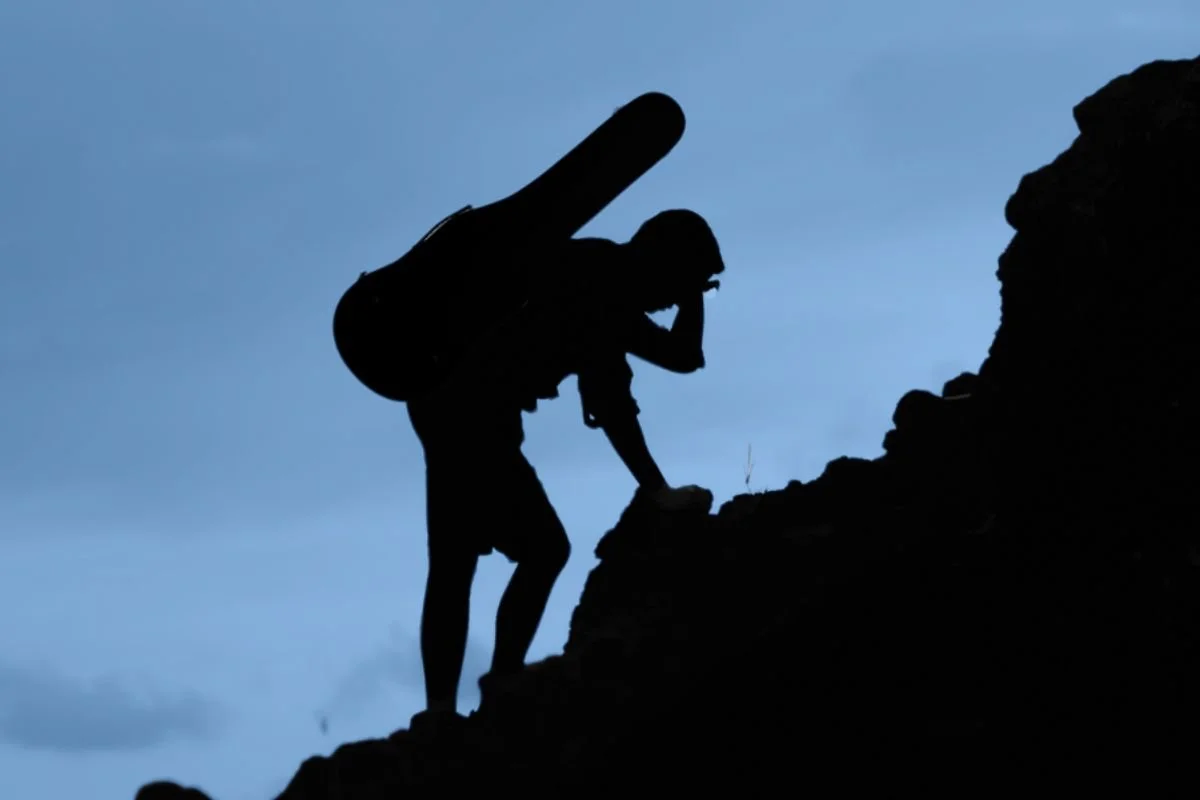How Long Does it Take to Be Discovered in Music? The Data, the Myths, and Real Artist Timelines
Every artist starts with a dream — to write great songs, reach an audience, and one day be "discovered." But behind every overnight success story, there's a reality most people never see: discovery in the music industry rarely happens overnight. It's not a single moment, but a series of years spent creating, failing, learning, and showing up consistently.
So, how long does it really take to get discovered? The truth might surprise you.
The Myth of Overnight Success
Scroll through social media and you'll see endless stories of artists who "blew up" on TikTok or landed a viral hit seemingly out of nowhere. But if you dig a little deeper, you'll find that most of these "new" artists have been quietly grinding for years.
Take Morgan Wallen — long before Dangerous broke records, he was performing at bars, auditioning for The Voice, and developing his sound for almost a decade. Or Lainey Wilson, who moved to Nashville in 2011 and lived in a camper trailer for years before her breakout success.
The myth of overnight fame is just that — a myth. What fans see as a sudden breakthrough is usually the result of years of unseen work finally gaining traction.
The Typical Artist Timeline
Every artist's path looks a little different, but across hundreds of stories, a consistent pattern emerges. Most artists experience four overlapping phases on their journey to being discovered.
The Foundation Years (0–2 years)
This is the phase where you're figuring out who you are as an artist. You're experimenting with your sound, learning your recording tools, writing constantly, and playing small gigs or open mics. These early years are all about skill-building and self-definition. The wins here are simple but essential — finishing your first songs, getting feedback, and finding the confidence to share your work publicly.
Building an Audience and Regional Reach (2–5 years)
Once you've built a bit of momentum, you start focusing on growing a real audience. You're more consistent with releases, you've probably developed a visual brand or content style, and you're seeing small pockets of listeners form around your music. This is when you might start getting local press, playlist adds, or opening slots for other artists in your area. You're learning what resonates and starting to think about scaling beyond your hometown.
Emerging Momentum (4–7 years)
By this stage, things start clicking — even if slowly. You've built a body of work, your live show feels tight, and people outside your immediate circle are starting to pay attention. Maybe you land a sync placement, your song hits a few major playlists, or you're booking regional tours. Industry professionals may start to take notice, but they're often watching from a distance to see if you can sustain momentum. The challenge now is consistency: releasing strategically, staying visible, and managing the growing workload.
Breakthrough and Sustainability (6–10+ years)
This is where discovery happens — not overnight, but as the result of everything you've built. You've accumulated years of fans, relationships, and creative output. You might sign with a label or management team, start headlining shows, or generate meaningful income from streaming, touring, or brand partnerships. Most importantly, your music career starts to feel stable — even if you're still growing. You've crossed that invisible line from aspiring to established.
The truth is, many artists underestimate just how long these stages take. What looks like a two-year rise from the outside is usually built on six years of unseen work — writing, performing, learning, and building community. Discovery isn't a finish line; it's simply the moment the rest of the world finally catches up to what you've been doing all along.
Why It Takes Time
Three main factors explain why building a sustainable career takes time. First, it takes years to master your songwriting, stage presence, and vocal control. The artists who last the longest are the ones who spent time sharpening their craft before their big break. Second, fans don't attach to an artist overnight. They connect with stories, authenticity, and repetition. The longer you stay visible and consistent, the deeper your fan relationships grow. Third, labels, managers, and booking agents rarely take big risks on untested artists. They look for a track record of work ethic, professionalism, and growth — all things that require time to demonstrate.
Use This Reality to Your Advantage
Instead of feeling discouraged by how long it takes, reframe it: you have time to grow, learn, and build something that lasts.
Start documenting your journey. Don't wait for perfection — start sharing your story online. Behind-the-scenes content builds connection and shows growth over time. Invest in relationships by attending songwriter rounds, open mics, and local industry events. The relationships you build now often lead to future opportunities. And track your progress quarterly by setting small 90-day goals. Monitor your growth in songwriting, social media, and live performances. Progress happens in inches before it happens in leaps.
Final Thoughts
Being discovered in music isn't about luck or timing — it's about persistence. Every "new" artist you admire once stood where you are now, wondering how long it would take. Stay focused on becoming great, not just getting found. The work you do in the quiet years is what sets the stage for everything that follows.
About the Author
Clay Myers is a music consultant and talent producer who helps emerging artists navigate the steps needed to build sustainable, successful careers. With years of experience in artist development, co-writing, talent production, and media strategy, Clay works with artists to grow their audience, develop their sound, and turn their music dreams into reality.

